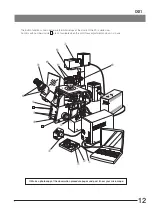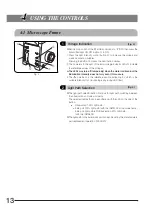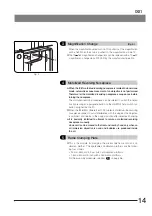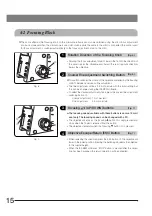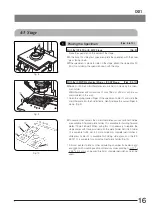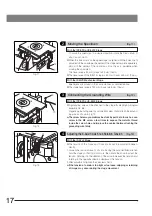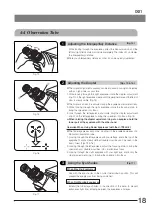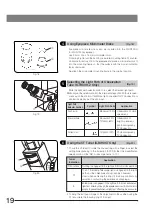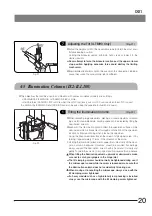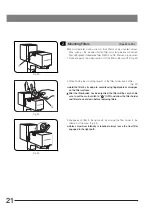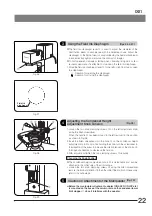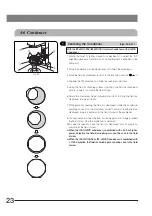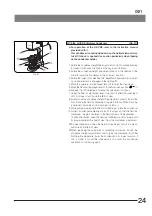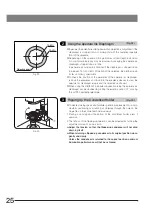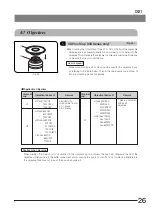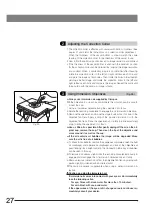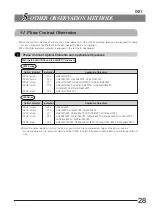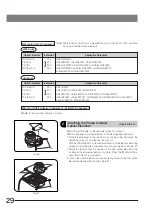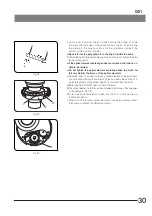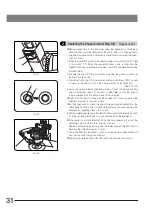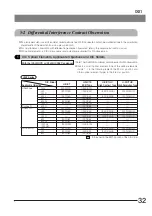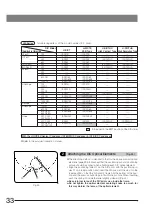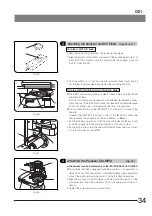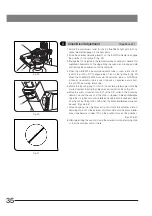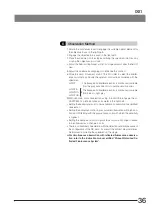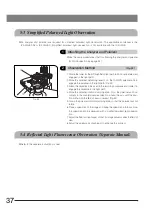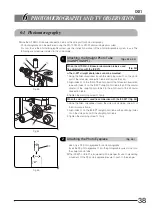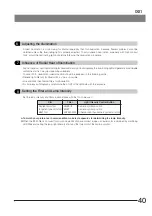
25
Fig. 32
Fig. 33
2
Using the Aperture Iris Diaphragm
(Fig. 32)
}In general, the potential resolving power of an objective is fully utilized if the
diaphragm is stopped down to correspond with the numerical aperture
(N.A.) of the objective.
}Depending on the specimen, image contras or focal depth in observa-
tion or photomicrography may be improved by keeping the aperture iris
diaphragm stopped down a little.
In general. a good image is obtained if the diaphragm is stopped down
to between 70% and 80% of the N.A. of the objective. Stop further down
for less contrasty specimens.
}To check the position of the perimeter of the aperture iris diaphragm,
remove the eyepieces and look into the eyepiece sleeves to view the
aperture iris diaphragm image and the objective’s exit pupil.
}When using the U-BI90CT binocular observation tube, the aperture iris
diaphragm can be observed by setting the turret to position “CT” or using
the U-CT30 centering telescope.
3
Flipping Up the Condenser Holder
(Fig. 33)
}To create working space and facilitate specimen replacement, microma-
nipulator positioning or mounting an objective through the hole on the
stage, flip up the condenser holder upwards.
1. Placing a hand against the bottom of the condenser holder, press it
upwards.
2. The tension of the flipping-up operation can be adjusted by turning the
adjustment screw
1
using a coin.
# Adjust the tension so that the flipped-up condenser will not drop
down by itself.
# When returning a flipped-up condenser to its original position, do so
gently and slowly.
Unless the condenser is returned to the correct position, optimum
illumination performance will not be achieved.
70-80%
30-20%
Objective pupil
1


